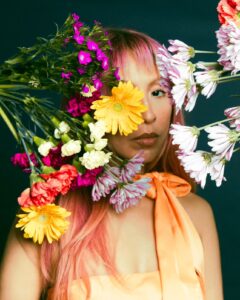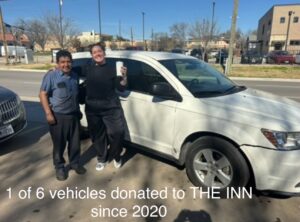
Last week, I had a discussion with Queen Kima to speak about how galleries were affected by this pandemic. I gained a great insight into how galleries were adapting to COVID-19 and wanted to continue the conversation with restrictions in Texas easing. I reached out to Brett Dyer, an artist and art professor who received his Bachelor of Fine Arts Cum Laude from the University of Texas at Tyler, Texas in painting and printmaking and a Master of Fine Arts degree in painting and intermedia arts from Texas Woman’s University in Denton, Texas. Brett has been employed at North Lake Campus of Dallas College since 2012 teaching Drawing 1 & 2, Painting 1 & 2, Design 1, Advanced Design, and Art Appreciation. He also serves as an advisor to the Art Club, a Faculty Mentor, and he has previously served as President of the North Lake Faculty Association, and as Treasurer of the Dallas Community College Faculty Association. Prior to teaching at North Lake, he worked as an Adjunct Professor of Art at El Centro College in Dallas and served as an Adjunct Professor of Art and a Full Time Temporary Art Professor at Tarrant County College Southeast Campus. Brett also taught private workshops in printmaking, encaustic, painting, and drawing at various DFW art centers such as the Dallas Arts Center, The Encaustic Center, Visual Arts Society of Texas, Trinity Arts Guild, and The Dallas Arboretum and Botanical Gardens. Brett exhibits his personal artwork locally and nationally at galleries and museums throughout the year.
A modernistic style called “Art Deco” was introduced due to the effects of the 1918 flu pandemic. This style emphasized the color white to symbolize hygiene. Do you foresee this pandemic having any influences on art pieces moving forward and have you noticed any style changes amongst your own work?
I have noticed several calls for entry with themes for Covid-19 inspired work which captures the social climate of our times; however, I have not really noticed a new style emerge at this point.
In my work, I have noticed the content and imagery has been more positive and colorful. I am not sure if this is something I need to create for myself or if I feel the need to create it to counterbalance the sadness and challenging world? I suspect it is a little of both.
Helen Klebesadel, a well-known visual artist, has mentioned to Artwork Archive that she has started focusing more on her virtual creativity coaching. What has your pivot to virtual opportunities been like and do you think well-known artists in the past could succeed in today’s multi-media environment?
As an artist and a full-time Art Professor at Dallas College, it has been a challenge to take studio arts courses online and create a sense of the same experiences students would receive in face-to-face courses, but there is a lot of technology available to help with this process. Last summer I enrolled in a yearlong training program through ACUE for professors to help improve online courses. I have learned so many helpful tips. Teaching my classes from my home studio has also allowed me more access to my studio than ever before, so I find myself being more productive and taking little breaks here and there to work on my own work. The added time on the computer is not ideal, but I know this is only temporary, and when I see my students submitting excellent work, I still get the same rewarding feelings as I would when I would see student work in person. Artists and teachers have always been the most flexible and adaptable individuals in most cases. I think because we imagine the future before it exists, we are usually excited about any new processes or tools that make life and our processes more impactful or accessible.
The Boston Globe wrote on top outdoor hot spots for murals and sculptures in the local area, providing photos of young artists flying out to the city to work on new projects. Do you forecast any specific cities or regions that will become artistic havens after COVID-19? Is there any key differences between marketing your work in outdoor events versus inside a traditional gallery?
I have definitely noticed an increased interest in DFW outdoor art. In 2015, I was commissioned to paint a mural in Deep Ellum, and it was such a rewarding experience. A few years later, I painted a large mural at a YMCA in Irving, and right now, I am working on two murals at North Lake Campus of Dallas College. One will be finished by the end of April hopefully, and the other will be completed in May and June. With each of these projects, I noticed a larger social media following, and more and more strangers and art enthusiasts were tagging me in their photos by my work. I do think outdoor art and street art really have an opportunity to attract more viewers than museums or galleries. Outdoor art seems to advertise more for itself. I predict we will see the arts continuing to boom in the suburbs as many seem interested in art centers, galleries, and outdoor art, and art events as seen in the larger neighboring cities. I have seen an increase of art activities in Coppell, Irving, Lewisville, and Addison over the last few years. I hope to see more and more opportunities continue to grow for artists.
Americans for the Arts reported that 66% of artists had limited access to resources, spaces, or people necessary for their work. The surveys were also to gain an understanding on the mental health impacts of sheltering in place and social distancing. Do you draw more creativity from isolation or networking and can collaborations be easily done in the current COVID-19 climate?
I had my own share of challenges growing up, during school, and early on in my career, so hard times do not usually influence my creative process or outlet negatively. If anything, I find myself becoming more resourceful and more inspired to create. I think artists have often been the hope and light during the darkest of times throughout history. My exhibition record has also been steady over the last year. Since many galleries have gone virtual, it has made some parts of the process easier. I have also attended several virtual receptions and artist talks in other states that I would not have been able to make if the events had been face-to-face. So, yes, I believe collaboration is possible. Since last March, I have been in exhibits and/or part of group collaborations in New Mexico, New Jersey, Illinois, South Carolina, Massachusetts, the United Kingdom, and several local DFW and Texas galleries and museums.

